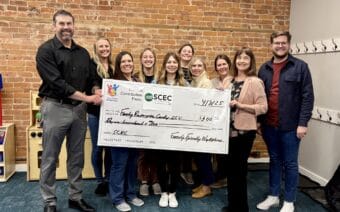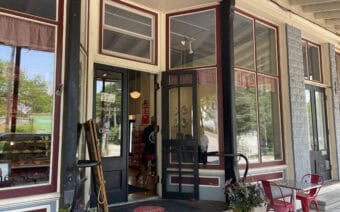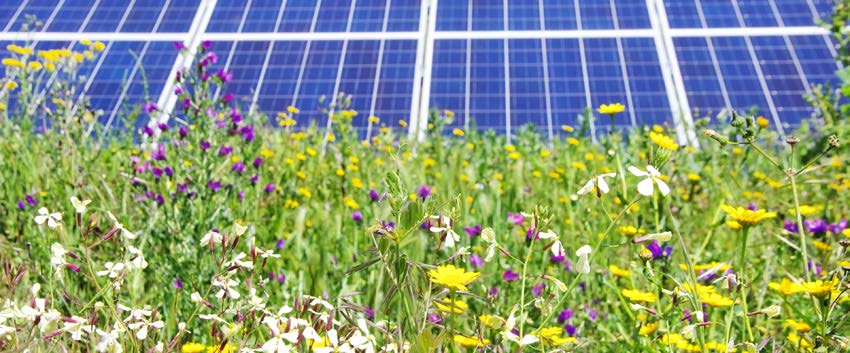
February 17, 2025
DUNN COUNTY – “Sunlight is the best disinfectant” – so goes an adage on the accountability of operating openly.
Rather than keep Dunn County “in the dark” about the solar plant planned in its community, Dylan Stickney, director of project development with Elk Creek Solar, developed and owned by TED Renewables, LLC – said the company has sought to reveal as much as possible about the fully approved project.
“We like to go out and at least – at the very, very least – offer our transparency, our time and as much education and information as we have,” Stickney said of TED Renewables’ approach to its projects.
Construction for the 300-megawatt, solar photovoltaic plant is expected to begin in late 2026 for Elk Creek Solar to be operational by late 2028, he said – representing “light” at the end of a lengthy-yet-rewarding tunnel.
Elk Creek Solar: Origins and overview
Stickney said TED (Tyr Energy Development) Renewables is a subsidiary of Tyr Energy Inc., based in Overland Park, Kansas.
“Tyr is an operations-focused company, so they only focus on owning and operating assets that are already constructed and built,” he said. “So, we stood up TED Renewables as its own company to be purely focused on the development of these projects.”
The projects, Stickney said, number nearly 25 and span an area “as far west as western Kansas, as far south as Alabama, (as far) north as Wisconsin and Minnesota and then as far east as North Carolina and Virginia – so really, kind of the belly of the central part of the United States.”
The U.S. and North America, Stickney said, are divided into different energy markets called independent system operators or regional transmission organizations, which often cross state lines.
“They’re federally regulated organizations that govern how utilities in their territories ‘play’ with each other, how they interact (and) how they transmit power between each service territory,” he said. “They also govern where the large-scale, wholesale power generation comes from, and who can build new projects. So, you kind of pick your market first where you think there’s demand for the power that you’re looking to originate.”
Stickney said Wisconsin, part of the Midcontinent Independent System Operator (MISO), represented such a market.
The Badger State also “had a lot of great precedents for solar,” he said, citing the Badger Hollow Solar Farm in the southwestern part of the state.
“Wisconsin has somewhat embraced the growth of utility-scale renewables and power generation, as have the utilities in the state,” he said. “They’ve embraced and integrated into their future goals how much power they want to come from renewable sources. So, there’s already a nice groundwork.”
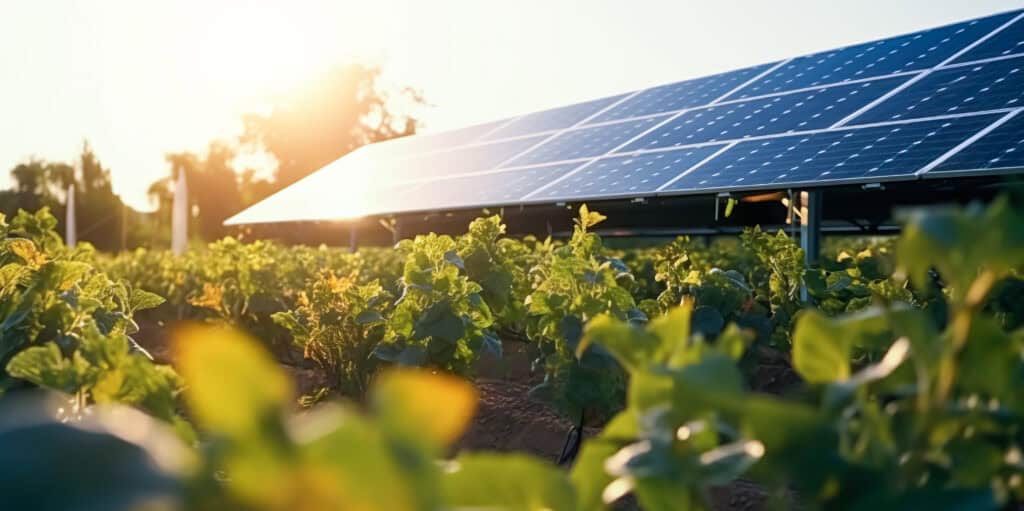
By studying the energy transmission system through Dunn County, Stickney said TED’s analysis revealed “there’s availability for more power to be loaded onto that transmission line (and) added to the system at that point.”
However, he said natural wildlife and geography, as well as land ownership, are also primary factors for site selection.
“It’s a very thorough and in-depth kind of geospatial analysis,” he said. “Along this (transmission) line, are there physical sites that fit the requirement of what a large solar project needs?”
An ideal location, he said, is a “relatively flat area – not constrained by designated wetlands, according to what fish and wildlife have demarcated in the past.”
“(It) would not be impacting any kind of species – certainly any species of threatened or endangered designation according to state or federal listings,” he said of a suitable project area. “And, almost most importantly, (it would need) a landowner that’s willing… and seeking an alternative use and revenue source from their land holdings.”
Considering all these requirements, Stickney said TED found a perfect potential place in Dunn County, outside of Menomonie, in the Town of Spring Brook.
The green light
Even when a location meets TED’s rigorous standards, Stickney said all projects require regulatory approval.
“Any large power plants in Wisconsin… are fully regulated by the Public Service Commission that’s based in Madison,” he said. “Their staff members do all the diligence of reviewing – ‘What kind of power plant is this? How much due diligence has this developer done?’ And then, they pass it up to the three voting commissioners that then say whether or not they think this should be approved for construction or not.”
The Elk Creek Solar plant received full approval in October 2023, Stickney said, at which point TED could have legally commenced construction regardless of the community’s awareness.
“Local jurisdictions – as the law reads – do not have any discretionary authority over whether you can build something like this in their town or county,” he said.
Though it’s not required, Stickney said TED chooses to communicate its plans to the members of the communities in which it builds.
With Elk Creek Solar, he said he and members of his team began a “lengthy community engagement campaign for the project” as early as September 2022, “before this project went public.”
“We went out and spoke at a regular town meeting in Spring Brook, and we went out and presented at one of the regular county supervised meetings in Dunn County,” he said. “(We) introduced ourselves, introduced our company, introduced the project, and said, ‘Hey, though we’re not going to be coming to you to vote on whether you think this project should get built or not, we want to have a positive working relationship with you, and we want to be very, very open and transparent to what it is that we’re proposing – what the details are, where this is located, what that means for your county roads, township roads (and) what that means for any possible benefit (such as) tax revenues.’”
The latter, Stickney said, will amount to “more than $1.6 million a year between Dunn County and Spring Brook every year for the next 35 years.”
With such an incentive and an appreciation for TED’s voluntary communication, Stickney said the county and town have granted the company allowance to “cross underneath or over town roads if we need to” and construct new driveway entrances to the plant site.
“And in return, we offered – voluntarily – a road repair obligation,” he said.
Elk Creek Solar also reached an agreement with Xcel Energy, who owns the transmission line, Stickney said, as TED absorbs the costs of “new transmission equipment to plug in and put that power on the grid.”
He said TED especially prizes the community’s support – and not just its initial approval, but the ongoing affiliation.
“We’ve continued our local relationship and community presence,” he said, “and I think that’s a big reason why the town and county were willing to enter into an agreement with us and agree to stay in communication, allow us certain use rights and certainly hold our feet to the fire for the commitment that we’ve made when it comes to maintaining vegetation and maintaining roads and sharing information with them.”
Via the plant’s website (elkcreeksolarproject.com), Stickney said TED has further communicated information to address curiosities and concerns, including:
- The project will not harm surrounding agricultural land
- After the project’s “useful life” (35-40 years on average), the land will again be available “for all future potential uses, including traditional agriculture”
- The facility will constantly be monitored electronically, and physically monitored during standard workweek hours, to mitigate what is “a very low risk of fire at large-scale solar facilities”
- The project will not decrease residential property values
- The solar panels are non-toxic, and 90% recyclable
- Local wildlife will be impacted minimally
Visit the website for more details.
Additional benefits
Stickney said projects like Elk Creek Solar bring benefits beyond the electricity and tax revenue generated.
First, he said meeting ever-increasing demands for power is part of realizing economic development possibilities, particularly with regard to new technologies centered on AI, data storage or manufacturing.
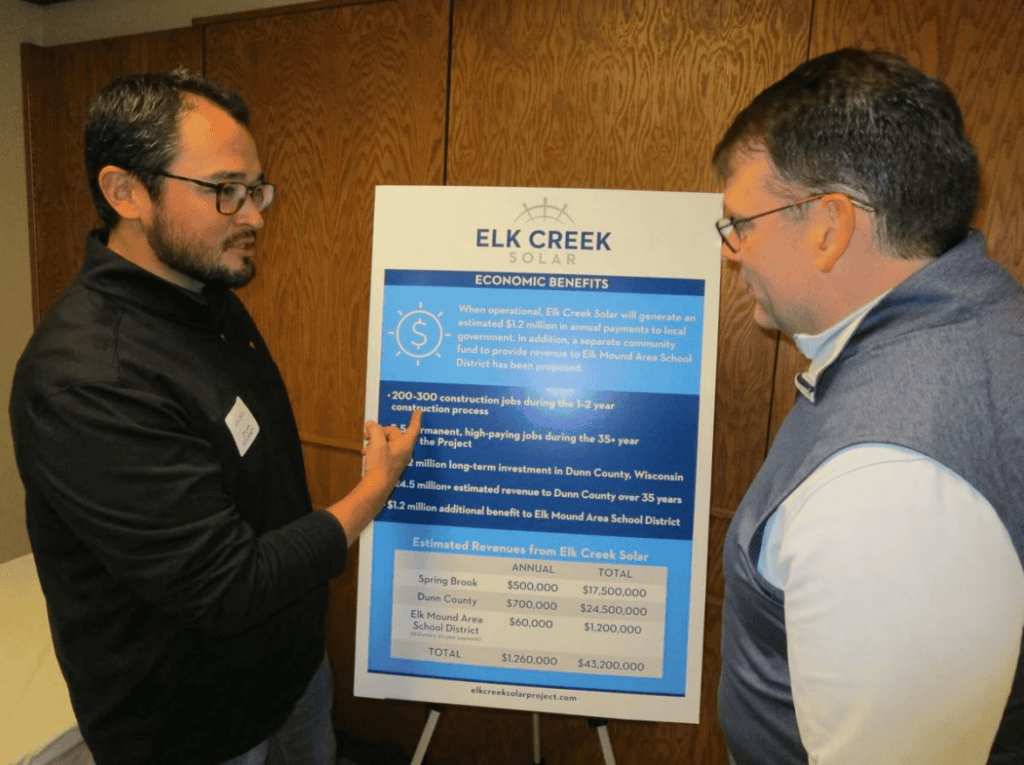
Next, expanding on the concerns regarding the agricultural viability of land following use as a solar plant, Stickney said such use is “a good way to allow 1,500 acres of land – that has been intensely farmed for 50 years, every year – to rest.”
“And that’s exactly what it’ll do,” he said. “Sure, it’ll be a host to some steel piles that are driven into the soil and solar panels sitting on top of them, but largely that topsoil remains unchanged, or arguably improved, from the vegetative seed that we’ve proposed and obligated ourselves to implement. This would be a pollinator-friendly mix of native grasses and deep-rooted vegetation that has a whole slew of its own benefits.”
Stickney also said he feels this is “the best type of (private) land development out there.”
“I may be a little biased,” he said, “but when it comes to not requiring municipal resources – as any kind of other commercial or industrial development in a new commercial/industrial development in a community would – not requiring water and sewer (and) not requiring more seats in the schools for all the population growth that it might bring, (developing a solar plant is best).”
Stickney said he understands the development doesn’t inherently bring more people/taxpayers to the area, nor does it create a great deal of jobs (per the website, 200-300 jobs during the one- to two-year construction process, and three to five, high-paying permanent jobs during the 35-plus-year life of the project).
However, he said it is still adding a considerable new tax revenue resource for Dunn County and for the Town of Spring Brook, “without asking for those municipal resources.”
“If you put all those things together, this is really one of those truly low-impact types of development that has a positive benefit and has a lot to offer over the next several decades,” he said.
Finally, Stickney said he finds personal benefit and fulfillment from his work for Elk Creek Solar and, more broadly, the renewable energy industry.
“Maybe it started as a climate agenda for me, and certainly (I have) a strong interest in the technology that’s included…,” he said. “But what it’s become is a very rewarding way to help local communities understand, educate themselves and really embrace what these facilities have to offer. Not just to the energy system, not just to the national kind of transition (to renewable energy) and a pie chart of where we get our power, but to these local communities.”
From rejuvenating a region’s water table to indirect economic benefits, Stickney said he relishes the opportunity to teach people the advantages of these “decades-long infrastructure assets.”
“It’s been a really good experience for me to meet people all over the country (and) hopefully introduce these things in the right way, with a very objective light on the facts,” he said. “And not just my opinions on why solar’s good, but the facts that have been thoroughly studied, published and proven already.”
 Green Bay Packers, NFL officially set dates for draft
Green Bay Packers, NFL officially set dates for draft CWIMA Summit & Expo: ‘A new adventure every year’
CWIMA Summit & Expo: ‘A new adventure every year’



